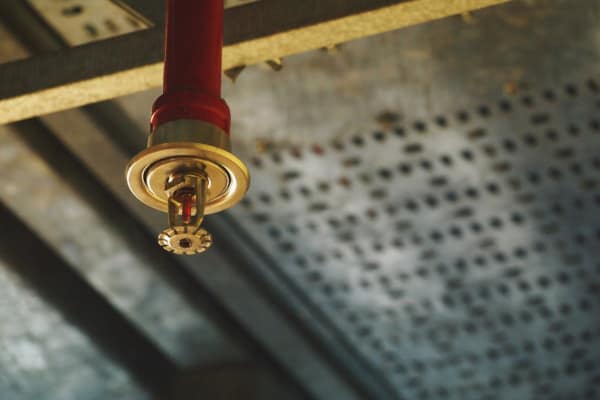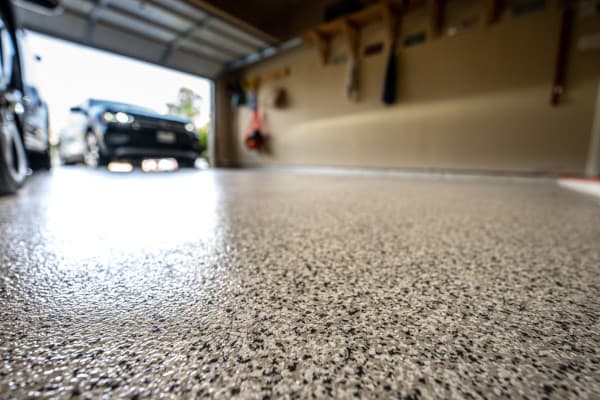A single fire sprinkler activated to safeguard a fire protection engineer’s garage, home, cars, and occupants
One of the “Sprinkler Saves” featured by the National Fire Sprinkler Association (NFSA) caught our attention for a couple of reasons. First, fire sprinklers, as they routinely do, prevented injuries and deaths while stopping massive property damage. Second, the fire and its control happened in a home garage—a place where the NFPA 13D installation standard doesn’t require sprinklers.
Let’s review what happened, plus why sprinklers aren’t always present in garages and when and why they may be installed.
A fire protection engineer reaps the rewards of his profession
Last year in May, a late-night fire broke out for an unknown reason in the garage of Fire Protection Engineer Bob Schifiliti. Fortunately, the garage and home were protected by a wet antifreeze system, smoke detectors, and a fire alarm system. We’ll let his words explain what happened next:
For those in the business, you know that a residential fire usually destroys everything in the room of origin either by direct fire and heat or by smoke and water. Not here. That single sprinkler contained the fire — although there was some horizontal spread under the 2 ft deep x 8 ft wide x 12 ft high shelves. I’m sure the 12 ft 4 in. ceilings and the 5/8 sheetrock with plaster coat all helped.
There were three cars in the garage at the time. The two farthest from the origin got pretty dirty, but no thermal damage. The car closest to the origin was my 1989 BMW E30, 325iX. It had a cover on it and the front left fender was just a few feet from the area of origin. It was covered in debris, soot and broken glass. The next morning, we removed the cover and drove the clean, undamaged car out.
To read the rest of the story, including a rundown of the installed fire protection systems and how they reacted, visit the NFSA blog.
Fire sprinklers in home garages?
Again, one interesting aspect of this event is that many homes do not have sprinklered garages. That’s because the go-to model standard for residential sprinklers, NFPA 13D: Standard for the Installation of Sprinkler Systems in One- and Two-Family Dwellings and Manufactured Homes, does not require coverage in these areas of the home. Other spaces are also excepted, including open attached porches and balconies, carports, small linen or clothes closets, bathrooms, and pantries.
The reasoning for this fire sprinkler safety decision is simple:
- It may be impractical to install sprinklers in some of these spaces.
- The standard is designed to make home fire sprinklers as straightforward and inexpensive to install as possible while still achieving life safety goals.
- The main goal of residential sprinkler systems is life safety—specifically, making sure occupants have time to escape as sprinklers control a fire—not comprehensive property protection. Many NFPA 13D elements reflect this objective, from the system design to the residential sprinkler heads. And because most of those areas are not ‘lived-in’ spaces, they are a lesser protection priority.
This calculation about exemptions was made and reinforced by generations of NFPA committees—and it makes sense. Many lives and properties have been saved by the additional sprinkler systems installed because of NFPA 13D’s less restrictive and relatively inexpensive requirements.
But the story above does illustrate that garages can be a source of a fire, and residents may benefit from sprinklering them. Some state and local governments agree, and they have amended their local sprinkler installation rules to require sprinklers in garages.
Also, note that the other residential standard, NFPA 13R: Standard for the Installation of Sprinkler Systems in Low-Rise Residential Occupancies, does require sprinklering garages that meet certain conditions, such as size and access by multiple dwelling units.
For a deeper dive into the residential sprinkler installation standards and the garage exception, stay tuned for a pending blog from QRFS!

Fire sprinkler safety takeaways: to sprinkler or not to sprinkler garages?
The biggest lesson from this story is that fire sprinklers once again did their job effectively and automatically, preventing the loss of the home and a possible tragedy. But a more subtle and debatable aspect is that more protection can be better from life safety and property protection standpoints.
Model sprinkler standards, especially the residential documents, strive to balance exhaustive protection and achieving safety goals. But they detail the rational, minimum acceptable requirements to hit these objectives within the contexts of cost, practicality, and efficacy.
So, if you are installing or retrofitting residential fire sprinklers and thinking about coverage of an attached garage even though it’s not required, that’s fine! Evaluate your local government’s rules along with your individual fire risks and home, and make decisions about a garage fire sprinkler system that are right for you.
Otherwise, QRFS is glad Bob Schifiliti’s fire protection systems did their job and kept his family and home safe. We’re also thankful for his service in our industry, helping safeguard others from experiencing the worst a fire can do.
So, in this case, QRFS offers Mr. Schifiliti a double thank you for fire sprinkler safety!
QRFS is on a mission to simplify fire protection through access to affordable products and information that make it easier for everyone to stay safe and compliant. Contact us at (888) 361-6662 or support@qrfs.com.
This blog was originally posted at blog.qrfs.com. If this article helped you, check us out at Facebook.com/QuickResponseFireSupply or Twitter @QuickResponseFS.


